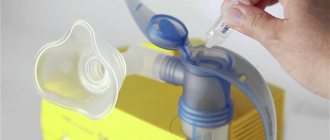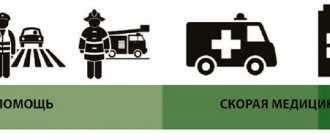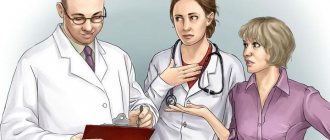With the onset of the autumn-winter season, from year to year, the circulation of non-influenza respiratory viruses (adenoviruses, respiratory syncytial viruses, parainfluenza viruses) begins in the space around us. Sporadic detection of influenza A and B viruses is also periodically observed. Many of these diseases are called colds. But in fact, there is no such disease as a cold in official medicine, but only acute respiratory infections or acute respiratory viral infections.
• What are acute respiratory infections, acute respiratory infections and acute respiratory viral infections • How to distinguish between acute respiratory infections and acute respiratory viral infections • The difference in symptoms • Modern approaches to treatment in adults • Drugs for etiotropic therapy • Drugs for antiviral therapy
What are acute respiratory infections and acute respiratory viral infections?
The term acute respiratory infections refers to a whole group of diseases that affect the respiratory system. The pathology is caused by various pathogens: protozoa, viruses, fungi, pathogenic bacteria. The diagnosis of acute respiratory infections is made when the etiology is unclear, when the doctor was unable to identify the main pathogen. In this case, mandatory laboratory examinations are indicated, on the basis of which the cause and name of the disease are clarified.
Since acute respiratory infections are caused by many infections, the disease is often acute and severe. A pronounced clinical picture is noted, the patient is worried about malaise, general weakness, runny nose, headaches and sore throat. Also prolonged fever, chills and eye sensitivity.
ARVIs are a number of pathologies that arise as a result of the penetration of various viruses into the body. Often the causative agents are adenoviruses, rhinoviruses, parainfluenza and influenza viruses. The main signs are a sore throat, runny nose, nasal congestion, high fever, weakness and headache.
Sources
- Gauglitz G., Steckmeier S., Pötschke J., Schwaiger H. Cohesive Polydensified Matrix® hyaluronic acid volumizer injected for cheek augmentation has additional positive effect on nasolabial folds. // Clin Cosmet Investig Dermatol - 2021 - Vol10 - NNULL - p.507-513; PMID:29276401
- D'Agostino A., Trevisiol L., Favero V., Gunson MJ., Pedica F., Nocini PF., Arnett GW. Hydroxyapatite/Collagen Composite Is a Reliable Material for Malar Augmentation. // J Oral Maxillofac Surg - 2021 - Vol74 - N6 - p.1238.e1-1238.e15; PMID:26954559
- Michels P., Vandeputte J., Kravtsov M. Treatment of Age-related Mid-face Atrophy by Injection of Cohesive Polydensified Matrix Hyaluronic Acid Volumizer. // J Clin Aesthet Dermatol - 2015 - Vol8 - N3 - p.28-34; PMID:25852812
- Khiabani K., Keyhan SO., Varedi P., Hemmat S., Razmdideh R., Hoseini E. Buccal fat pad lifting: an alternative open technique for malar augmentation. // J Oral Maxillofac Surg - 2014 - Vol72 - N2 - p.403.e1-15; PMID:24438602
The difference between acute respiratory infections and acute respiratory viral infections
The main difference between acute respiratory viral infections and acute respiratory infections is the etiology of the diseases. In the first case, the causes are viruses, in the second - pathogenic bacteria, viruses and other pathogens.
The symptoms are also different. Acute respiratory diseases are characterized by a slightly high temperature, cough, runny nose, and inflammatory damage to the mucous membrane of the larynx. The development factor is hypothermia of the body. Treatment is carried out with antiviral and antibacterial agents. The duration of acute respiratory infections is at least 14 days in the absence of complications.
With ARVI, the situation is different. During the development of infection, high body temperature is recorded, up to 40 C or more. The patient complains of malaise, severe weakness and body pain. There is redness of the eyes with conjunctivitis, runny nose, and nasal congestion. Infection with pathology occurs from a specific pathogen. Therefore, treatment is targeted, antiviral drugs and symptomatic drugs are prescribed.
A reliable way to distinguish coronavirus from other types of acute respiratory viral infections
Even experienced doctors often fail to make an unambiguous diagnosis simply by comparing the symptoms of influenza and coronavirus. In order to accurately determine the type of disease in patients, it is necessary to conduct special laboratory tests.
You can distinguish coronavirus from influenza by doing the following types of tests:
- PCR study. Produced on the direction of a doctor. The patient will only need a swab of the throat and nose; in some cases, it is possible to extract another biological fluid - blood, sputum, or rinse water from the bronchi. The resulting material is studied in laboratory conditions, and specialists look for virus cells in it. The approximate turnaround time for results is 1–3 days.
- Immunoglobulin test. Allows you to determine the presence of antibodies in the blood. It is used to clarify the current stage of COVID-19 in patients with a confirmed diagnosis, as well as to identify people who have had the disease asymptomatically.
It is extremely difficult to make a diagnosis on your own. Even the presence or absence of characteristic symptoms does not guarantee infection. Tests can also give false positive or false negative results, but their accuracy is quite high in any case. If you experience symptoms of ARVI or a cold, you should definitely consult a doctor. Only after receiving the results of the study can we speak with confidence about the presence of COVID-19 pathogens in the body and begin adequate treatment.
Reasons for development
The main cause of ARVI is viral cells. Acute respiratory infections develop as a result of various infections: fungi, pathogenic bacteria, less often protozoa and parasites, and viruses.
Secondary factors provoking diseases are:
- Weak immune system.
- Nervous overstrain.
- Hypothermia of the body.
- Concomitant pathologies, including chronic forms.
- Deficiency of vitamins and minerals necessary for normal functioning.
- Poor nutrition.
- Unfavorable environment in the place of residence (dirty air, water).
What diseases are there?
The human respiratory system is divided into upper and lower sections. The upper part is affected by chlamydial organisms, microplasmas, influenza viruses, herpes, streptococci, staphylococci, pneumococci, and Haemophilus influenzae.
Half of the infections are influenza viruses; there are mixed infections, but it is the virus that causes epidemics, complications and human death. Therefore, it is important to treat the signs of acute respiratory infections at the infection stage than to treat the consequences of non-treatment.
ARVI is difficult to treat, just like distinguishing the flu. Colds are mild.
Symptoms of acute respiratory infections and acute respiratory viral infections
Symptoms help differentiate between acute respiratory viral infections and acute respiratory infections. However, diseases do not appear immediately. At the stage of incubation development, there are no signs. Their occurrence is observed 2-3 days after infection. Less often after a week if the person has a strong immune system.
At this time, it is recommended to undergo a medical examination so that the doctor can correctly diagnose and prescribe competent treatment tactics.
Symptoms characteristic of acute respiratory infections:
- Sneezing, runny nose.
- Weakness, malaise.
- Temperature rises to 38 C.
- Painful sensations in the throat.
- Wet cough with clear sputum.
- Diarrhea is possible.
- Watery eyes, inflammation of the mucous membranes of the eyes.
In acute respiratory viral infections, the following symptoms are observed:
- Sudden onset of illness.
- High body temperature up to 40 C or more. Lasts a long time, hard to knock off.
- Inflammatory lesion of the throat; when complications develop, a sore throat with a specific plaque occurs. The sputum changes color to green or yellow.
- Severe weakness, general malaise. Therefore, the patient often feels sleepy.
- Dry cough – at the beginning of an infection. Afterwards, sputum separation is observed, against the background of which bronchitis, tracheitis and other complicated conditions develop.
- Headache.
- Nasal congestion.
Two days after being discharged from Regional Hospital No. 1, I was taken by ambulance with heavy bleeding to the First City Hospital, to the surgery department. The doctor on duty, Andrey Alekseevich Kulakov, examined me and decided to prepare me for an emergency operation. His instructions were quickly, clearly and most importantly skillfully carried out by nurse Alexander, nurse Anna (medical university students) and sister-hostess Anna Vladimirovna, who was on duty that evening. Literally in a matter of minutes they undressed me, put in the necessary IVs, and decided on a bed. And very soon I found myself in the operating room. Andrey Alekseevich and his assistant did everything that was needed. Very quiet and good surgeons. Thank you! After the operation, they also did everything necessary (droppers, catheters, etc.). The next morning, an attending physician was appointed - Svetlana Viktorovna Yevtushenko. Very competent, knowledgeable specialist. Who will not only prescribe the necessary medications and procedures, but also with a kind word will reassure you and set you in a positive mood for a speedy recovery. Thank you for everything Svetlana Viktorovna! I would like to thank nurses Tatyana and Natalya, and guard nurse Tamara Sergeevna. Thanks to dressing nurse Olga Sergeevna, not only for her professionalism, but also for her sincerity. Sister-housekeeper Anna Vladimirovna spends the whole day busy with the affairs of the department - changing linen, helping the nurses, sending linen to be washed, etc. Thank you. You are a kind person! Thanks to all the nurses, I don’t mention them by name because I’m afraid I’ll miss someone and offend someone with inattention. Special thanks to the nurses on duty – nurses – students: of course, Alexander and Anna, as well as Kirill, German and Veronica. A little about everyday life. Linen is changed on time. The food is very good and tasty. For most patients it was enough. Of course, there were those who throughout their lives were on some newfangled diets or considered themselves blue bloods. Relatives brought food to them. Most, on the contrary, called and said that food should not be brought to them. Now about the disadvantages. The first is cockroaches, there are a lot of them. The second characteristic of almost all hospitals in Vladivostok except PKOD is the lack of drinking water. There is boiling water, but no cold drinking water. We somehow got out of the habit of drinking tap water. Why not do it like in the Oncosurgical Department of PKOD, there is a filter there, like we install at home under the sink. This is such a chaotic review. With all respect, Andrew.
Suprun Andrey
Treatment of acute respiratory infections and acute respiratory viral infections
Since acute respiratory viral infections and acute respiratory infections are caused by different factors, their treatment is not the same.
Treatment of acute respiratory diseases is difficult. Sometimes it is difficult to identify the main pathogen. To do this, a series of medical examinations are carried out. A bacterial or viral infection of the body is often diagnosed, and based on this, etiological and symptomatic therapy is prescribed.
If the cause is pathogenic bacteria, antibacterial agents are prescribed. For a viral infection, antiviral drugs are indicated. Additionally, antipyretic, expectorant, and vasoconstrictor medications are prescribed. Also aerosols, nasal drops, vitamins, plenty of warm drinks and bed rest.
It is forbidden to treat ARVI on your own for more than 3 days. In this case, the risk of complications increases. You need to see a doctor. Patients are prescribed a course of antiviral therapy. To relieve symptoms, anti-inflammatory, antihistamine, and antipyretic drugs are prescribed. It is useful to gargle with decoctions of medicinal plants. Navizin and Pinosol are used for a runny nose. For pain and high fever, Paracetamol and Ibuprofen are prescribed. ACC, Mucaltin and other expectorants are effective for treating cough.
It is important to maintain rest, bed rest, drink more fluids and take vitamin complexes.
Note!
It is very important to pay attention to several points when purchasing a drug.
Firstly, this is the quality of medicines. European manufacturers working according to the GMP standard guarantee the quality and safety of medicines. GMP (Good Manufacturing Practice) is a standard applied to the production of medicines. Guarantees high quality products, which is achieved through careful control over the production process at all stages from the production of components to packaging of the finished product.
Secondly, it is necessary to carefully study the composition of the complex product. There are medicines that contain a huge number of components, but this does not guarantee fast and better treatment. Some components may be incompatible with each other or should not be taken by children. For example, due to the toxicity of rimantadine (found in some flu medications), the benefits of taking it are much less than the possible negative consequences. You should also remember that children should not be given aspirin, as it weakens the walls of blood vessels.
Another important rule that you need to know is that you should not try to treat the flu with antibiotics and antiviral drugs without a doctor’s prescription. Remember that antibiotics only kill bacteria and are not effective against viral infections. Sometimes the doctor prescribes antibiotics for the flu, but only if complications caused by bacteria (inflammation of the lungs, middle ear or paranasal sinuses) have arisen during the illness. And it is important to remember that treatment for colds and flu should always be correct!
Author: Anna Orekhova
Flu prevention
The best measure is to prevent infection, infection. It is necessary to strengthen the immune system year-round by consuming vitamins, excluding bad habits and contact with sick people. If necessary, during epidemics, do not visit places with large crowds of people (cafes, hospitals, entertainment and shopping centers).
Prevention measures:
- Vaccination.
- Hardening.
- Doing physical exercises and exercises.
- Balanced, proper nutrition.
- Lubricating the nasal passages with oxolinic ointment, interferon, and Vaseline.
- Maintain hand hygiene.
- Use of individual utensils.
- Regular ventilation of the room.
The correct drinking balance removes unnecessary substances from the body and helps eliminate infection. The best prevention of the disease is vaccination. The flu shot is given every year.





![Table 2. Hemodynamic definition of PH (adapted from [2] with modifications)](https://ms-pi.ru/wp-content/uploads/tablica-2-gemodinamicheskoe-opredelenie-lg-adaptirovano-iz-2-s-izmeneniyami-330x140.jpg)



